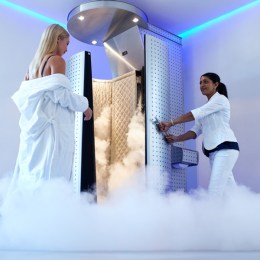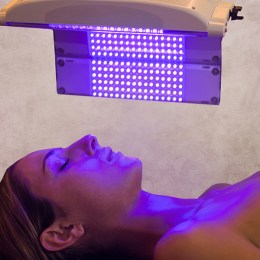Miscommunication can cause drama in any scenario, but particularly throughout the aesthetics industry where clients expect certain results. If they don’t get these, they are likely to complain, ask for a refund, or worse, never return.
How often do you follow up with your clients after facials, peels, injectables or lasers to hear if they’re happy with their results? If you don’t, or you encounter a few too many unhappy patients during your follow-ups, it could be time to look at your pre- and post- treatment instructions.
It’s never safe to assume that something that seems obvious to you is also obvious to the client. Do your clients know not to go to the gym after their injectables? If it’s their first time getting jabbed – and even if it isn’t – your client will probably be surprised that there is such a thing as ‘post-treatment rules’ at all, so they need to be informed well in advance – not five minutes before the treatment, or they may be left feeling confused or rushed.
Chrys Antoniou, Dermal Clinician at Silkwood Medispa, knows a thing or two about the importance of communication with her clients. Throughout the years, she’s identified a few things that clients keep doing wrong when not specifically told otherwise.
Pre-Treatment
“Patients always want treatment on the day and don’t understand their skin may need to be prepped for a few weeks beforehand based on their skin colour. Olive and darker skin tones can react to peels or lasers which can cause hyper pigmentation. Therefore, preparing the skin with pigment inhibitors is a must,” she explains. “Another common problem includes selftanners or spray tans. People use self-tanners and then want to have a laser treatment for pigmentation a few days later. However, it’s important to stay away from any form of tanning for two weeks prior to treatment. Even if the tan is no longer visible, it may linger inside pores and the laser will pick it up, causing an adverse reaction.”
Many people also don’t realise that their humble skincare routine could be counterproductive for the treatment they want to have. Using skincare that includes retinol can be a problem. “When having an ablative laser procedure for the face, ceasing application of Retin A for one week prior till at least three weeks post treatment is a necessity. This ensures the skin heals before we can start increasing cell turnover,” advises Antoniou.
And then there are the internal factors that many clients don’t realise could affect their treatment. Knowing what medication your client is on is extremely important, particularly before photofacials. “You need to let your clinician know if you’ve just finished antibiotics or are taking anti-depressants as some medications are photosensitive if exposed to light therapies such as BBL (IPL) or lasers. Patients tend to forget to tell you, which is why I always ask prior to starting a treatment to avoid potential burns.” “Some patients wrongly assume they will not be treated if they are taking certain medications, or believe it is not necessary for us to know all their medications or conditions. If we do not have a complete medical history, we cannot do our job properly,” says Antoniou.
Post-Treatment
It’s certainly a great start if your client has followed their pre-treatment instructions, but what they do after their treatment can directly affect their result. Remember that people tend to be lazy. So handing them a bullet point list with all their post-treatment instructions before they walk out the door as well as e-mailing it to them is probably a good idea. That way, they can’t say they “lost the piece of paper” or that you “never gave it to them.”
When it comes to common things people mess up after their treatment, sun exposure is a big one, says Antoniou. “I need to keep reminding patients that they must always wear sunscreen and be more aware of sun exposure post laser treatments as this makes them more sun sensitive. I also advise to make sure they apply sunscreen about 30 minutes before leaving home so that it has a chance to activate. The SPF is also very important, as are the ingredients used in the sunscreen, with some ingredients better than others particularly with regards to minimising pigmentation.”
“With regards to peels I have to keep reminding them to not use any active ingredients for five days post peel as this will cause irritation on the skin. A big no no is Retinol (Vitamin A).” But it can be even smaller, seemingly obvious things you shouldn’t forget to tell clients about. Those coming in for a facial probably don’t think about post-care, but you’d be surprised how much can be done wrong afterwards. These are a few things that would temper with the best result of a facial:
- Putting on heavy makeup straight after
- Hitting the gym
- Having a shower and washing their face
- Exfoliating the same day
- Waxing eyebrows/upper lip
- Going out in the sun
It’s important to keep in mind that although the above may seem obvious to you, it won’t to everyone else, especially not if they’re new in the facial game. Explaining them to your client, as well as why it’s crucial to adhere to them, will make a big difference to your clients’ satisfaction and treatment results, plus, as well as making your job a whole lot easier. You might even want to list pre-and post treatment care on your website so potential clients can familiarise themselves with it, however, there’s no substitute for discussing it directly at the time of booking on the phone, in a follow-up e-mail, and a physical paper list that you hand them when they’re with you. Having those four touchpoints will significantly lower the risk of them sabotaging their results.
For more news, subscribe to our weekly newsletter.




